Name Christopher Busby | Role Scientist | |
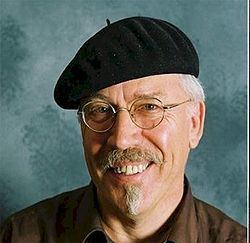 | ||
Education | ||
Effects of Radiation Cancer Risk Dr Christopher Busby Valentin Part 2
Christopher Busby (born 1 September 1945) is a controversial British scientist known for his theories about the negative health effects of very low-dose internal ionising radiation. Busby is a director of Green Audit Limited, a private company, and scientific advisor to the Low Level Radiation Campaign (LLRC), another private company that he set up in 1999.
Contents
- Effects of Radiation Cancer Risk Dr Christopher Busby Valentin Part 2
- 14032011 Chris Busby talks about Fukushima on BBC News
- Career
- Second event theory and photoelectric effect controversy
- Conflicts with other low dose radiation researchers
- Televised comments on Fukushima I nuclear accidents
- Controversy regarding sale of Anti radiation pills
- Research on WDU Weapons Derived Uranium
- Selected publications
- Books
- Book Chapters
- References
Following the 2011 Fukushima Daiichi nuclear disaster, Busby established a television and internet presence where he discussed the risks of ionizing radiation and the Japanese Government's handling of the disaster. On his Japanese language website, Busby marketed tests and a mineral supplement (dubbed by critics an "anti-radiation" pill) that he claimed could mitigate the effects of ingested radioisotopes.
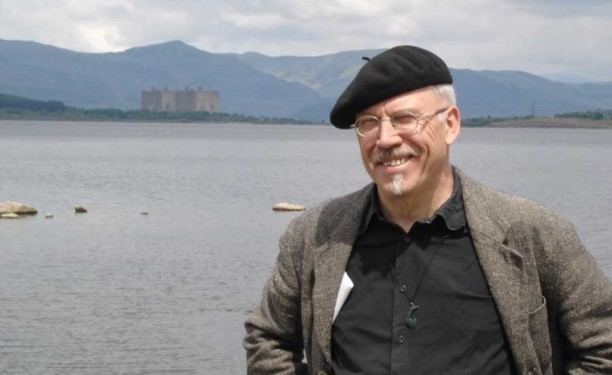
14.03.2011 Chris Busby talks about Fukushima on BBC News
Career
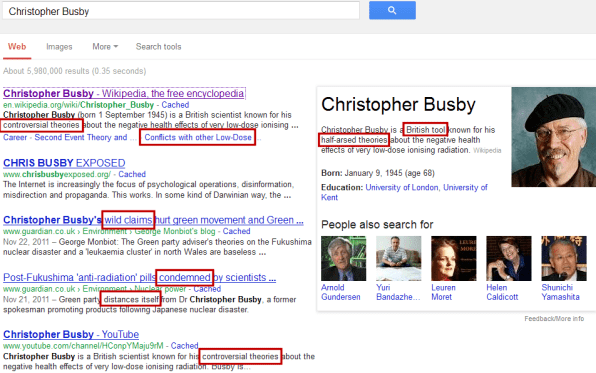
Busby gained a BSc in Chemistry with First Class Honours from the University of London. He later gained a PhD in chemical physics at the University of Kent, researching Raman spectro-electrochemistry. Busby was a member of the British government sponsored Committee Examining Radiation Risks from Internal Emitters (CERRIE), which operated from 2001 to 2004. In 2001, he was appointed to the UK Ministry of Defence Oversight Committee on Depleted Uranium (DUOB). Between 2003 and 2007 he was a Fellow of the Faculty of Medicine, University of Liverpool, in the Department of Human Anatomy and Cell Biology, and he was visiting professor at the School of Biomedical Sciences until his retirement in 2012 University of Ulster. He was then Guest Researcher at Jacobs University Bremen for a year and is currently Scientific Director of Environmental Research SIA in Riga, Latvia.
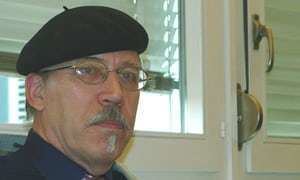
Busby is a former National Speaker on Science and Technology for the Green Party of England and Wales.
Second event theory and photoelectric effect controversy
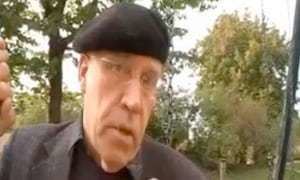
From 1987 onwards Busby has written on the health effects of ionizing radiation and developed what he has named "second event theory" (SET) and "photoelectric effect theory" (PET). He claims that these theories demonstrate that the widely accepted linear no-threshold (LNT) model substantially underestimates the risk of low level radiation (the LNT model is largely constructed from the 1958 to 2001 'Life Span Study' of the 120,321 Japanese Atomic Bomb Survivors (hibakusha (被爆者)) who were exposed to a powerful external burst of neutron and gamma radiation). Busby claims that in the low dose regime, radiation moderately above background causes more cancer than much higher levels of radiation i.e. a biphasic (bimodal) curve; a claim based on the work of Russian biologist Elena Burlakova.
Busby initially proposed the Second Event Theory (SET) in 1995, in his self-published book Wings of Death: Nuclear Pollution and Human Health claiming that isotopes which decay sequentially, emitting two or more particles in a short decay chain, have far greater genotoxic effects than predicted by the LNT model. According to this theory, the 90Sr-90Y decay chain would be ~30 times more carcinogenic than predicted by LNT. According to SET, primary exposure to a beta particle alters a cell to the G2 Phase, which Busby claims would render the cell highly radio-sensitive and more prone to malignant changes when exposed to a second particle.
SET was criticised by Cox & Edwards (2000) who stated that if Busby's "biologically implausible" theory was correct and all irradiated cells undergo transformation to the G2 Phase, it would cause an increased risk factor of just 1.3 times and predict, on the contrary, substantial risk reduction at low doses for single emitting radioisotopes. Furthermore, it was established in 1906 (The Law of Bergonié and Tribondeau) that cells in the G2 Phase are more resistant to radiation than cells in the M Phase (Radiosensitivity and Cell cycle). The Committee Examining Radiation Risks of Internal Emitters (CERRIE) report, on which Busby was one of twelve members, exhaustively examined the biological plausibility of SET and commissioned an independent consultant to conduct a literature review. In 2004 CERRIE rejected the SET by a 10 to 2 majority consensus (Busby and non-scientist Richard Bramhall, dissented). The rejection was made for following reasons:
CERRIE also considered and rejected by 10 to 2 consensus the biphasic (bimodal) curve of Burlakova et al. (1999), due to the study's "substantial shortcomings"; tables were so ambiguous that the risk-dose response could be interpreted as linear, biphasic or even promoting health (radiation hormesis).
In 2011, Busby began selling a minority report for £25 on his website, in which he claimed that cancer risk from internal exposures to low doses of radiation is 300 times greater than predicted under the LNT model, that the LNT model is meaningless, and that cancer incidence rates in Sweden and Belarus increased by 40% since Chernobyl.
Later work by Busby focused on the health effects of ingested depleted uranium particles and the photoelectric effect theory (PET). The photoelectric effect theory proposes that ingested uranium particles vastly increase the potency of natural background radiation, by 500 to 1000 times, via the photoelectric effect. However, subsequent computer simulations by Pattison (2013) indicate that radiation enhancement via the photoelectric effect is minute, the radiation enhancement effect due to one 10 μm-sized DU particle in 1 cm3 of tissue is just 2 in 10 million greater than a particle not being present.
Conflicts with other low-dose radiation researchers
Busby is the author of two self-published books on cancer incidence in Wales, Wings of Death and Wolves of Water.
The books were criticised in the Journal of Radiological Protection as "erroneous in consequence of various mistakes". According to Richard Wakeford, the editor-in-chief of the journal, a fellow CERRIE committee member representing the nuclear industry, and a specialist in the health effects of low-dose radiation (formerly with British Nuclear Fuels), Busby's work is "Deeply flawed".
Busby served on the UK Government's Committee Examining Radiation Risks of Internal Emitters (CERRIE), which operated between 2001 and 2004, and included medical professionals, scientists, delegates from Greenpeace and Friends of the Earth, and Richard Wakeford representing the nuclear industry. Busby ultimately disagreed with the committee's conclusions and published a "minority report" with another committee member from LLRC. On the LLRC website page selling the minority report, it's claimed (without citation) that north Sweden cancer rates have increased by 40% since Chernobyl. A doctoral dissertation from 2007 was reported as saying that the area "has shown a small but statistically significant increase in the incidence of cancer".
Busby has criticised other researchers studying health effects from low-dose radiation, for being "stupid" and "ignorant", and in particular Emeritus Professor Wade Allison of Oxford who had quoted a UN report saying that only 28 people have died as of 2005 from radiation releases at Chernobyl and who has said there is an "over-reaction" to low-dose radiation. In particular, he seems to have taken exception to Allison on philosophical grounds:
I have chosen to pitch into him since he epitomises and crystallises for us the arguments of the stupid physicist. In this he has done us a favour, since he is really easy to shoot down. All the arguments are in one place. Stupid physicists? Make no mistake, physicists are stupid. They make themselves stupid by a kind of religious belief in mathematical modelling. The old Bertie Russell logical positivist trap.Busby went on to say, claiming support from a New York Academy of Sciences publication titled Chernobyl: Consequences of the Catastrophe for People and the Environment, that "more than a million people have died between 1986 and 2004 as a direct result of Chernobyl". The report was in actuality only a translation of a Russian book not put under peer review by NYAS. Contrary to the UN report cited by Allison, it claims several hundred thousand deaths and projects the number to go higher, with some support from mathematical modelling. He can be equivocal about modelling—in earlier comments on BBC, he'd claimed "significant" plutonium releases from Fukushima detected far north of the reactor complex, supposedly established in part through the use of "a very advanced, sophisticated, computer air-flow model."
Antone Brooks (former Technical Research Director of the US Department of Energy's Low Dose Radiation Research Program) has also had differences with Busby.
Televised comments on Fukushima I nuclear accidents
In a 14 March broadcast on BBC, Busby was interviewed along with Ian Fells, and characterised the accident as "exactly the same scenario" as Chernobyl. While admitting that the containment structure for Fukushima Dai-ichi was more much advanced than that at Chernobyl, he claimed there could be "nuclear explosion" rather than (as reported) a hydrogen explosion, if fuel elements had melted down and collected at the bottom of the vessel. He also asserted that radiation levels measured at a reactor north of Fukushima Dai-ichi (i.e. Onagawa) indicated that "up to 100 kilometers away, we are getting concentrations of plutonium, cesium and iodine" (sic – presumably radionuclides thereof) released from Fukushima Dai-ichi, making the releases comparable in his opinion to Chernobyl, in terms of human health impact. In response to Fells' characterisation of the worst immediate effects being loss of power to an advanced industrial society, Busby said "this is a radiological catastrophe already", asserting in particular that plutonium releases were a major cause of concern.
On 30 March 2011, Busby first appeared on RT (formerly known as Russia Today) stating that the Fukushima Nuclear Disaster was worse than being reported. During the follow up interview on 13 April 2011, Busby stated that Fukushima radiation pollution could cause up to 400,000 added cancer cases among those living within 200 km of the reactor, with " reports of significant radiation ... even south of Tokyo".
On 25 April, Busby stated on RT that he believed one of the explosions at the Fukushima I nuclear reactors was a "nuclear" one, rather than a hydrogen explosion as reported. In the same RT broadcast, he referred to calculations made with his colleagues estimating that Chernobyl had killed 1,400,000 people, and that Fukushima's death toll would be in the same range, if not worse.
Controversy regarding sale of "Anti-radiation" pills
Following the Fukushima Daiichi nuclear disaster, Busby established an internet presence discussing the risks of ionizing radiation and a conspiracy theory involving Japanese Government's efforts to spread radioactive contamination throughout the country. He also marketed online, services and a mineral supplement he claimed mitigate the dangers of ingested radioisotopes.
Busby claimed radioactive caesium-137 released from the nuclear disaster can cause heart muscle damage and heart attacks in children and a mineral supplement, sold on his Japanese language website via 4u-detox of San Pedro, California, could prevent these deleterious effects (labelled Busby Laboratories, Formula 1, Christopher Busby Foundation for The Children of Fukushima). Busby says he bases his cardiac claims on the work of husband-and-wife team Yury Bandazhevsky and Galina Bandazhevskaya; known for their controversial claims that arrhythmia and heart attacks occurred in children at caesium-137 levels as low as 50 Bqkg−1 and that oral apple pectin increases its excretion (by comparison banana contains ca. 3000 Bqkg−1 of natural potassium-40).
Busby later self-published a document that he claimed offered theoretical support for his supplement, namely an ability to block certain radioisotopes from binding to DNA. However, his document also explains that his supplement cannot block caesium-137, because it does not contain a protective dose of stable caesium:
Additionally, Busby alleges the Japanese Government is involved in a conspiracy to spread radioactive contamination throughout Japan, in an effort to hide cancer clusters from epidemiologists and thus hinder litigation (cancer clusters are typically statistically identified by comparison with an unexposed cohort). Gerry Thomas, professor of molecular pathology at the department of surgery and cancer at Imperial College, London, condemned the "anti-radiation" pills as useless and described the claims made by Busby as ludicrous. Ohtsura Niwa, professor at the Kyoto University Radiation Biology Center and CEO of BioMedics Japan, disagreed with Busby's contention that radiation is being deliberately spread throughout Japan. Niwa noted that the ownership of dosimeters in Japan is now widespread and if radioactive contamination was actively spread about, people would know. Niwa also agreed with Thomas, that mineral supplements cannot guard against strontium, uranium and plutonium radioisotopes. Similar mineral supplements are widely available in chemists in Tokyo, at 1/8th cost offered by Busby Laboratories.
Recently, a research team at the Experimental Radio-TOXological Laboratory (LRTOX), France, independently investigated the effects of high level (500 Bqkg−1) caesium-137 exposure in animals (heart, testes, blood, cholesterol, immune system, foetus etc.). For example, Guéguen et al. (2008) investigated the possible cardiac effects of 500 Bqkg−1 caesium-137 exposure in rats over 3 months. They observed that, while caesium-137 exposure did not cause any damage to heart cells or arrhythmias, results indicated that quite subtle cardiac impairment might worsen in some sensitive individuals over time. Also, Le Gal et al. (2006) found that the excretion of caesium-137 was not increased by oral apple pectin, however prussian blue (the drug Radiogardase®) enhanced faecal excretion of caesium-137 fivefold. Furthermore, the study of Bandazhevskaya (2004) involving oral apple pectin was criticised by Jargin (2010), who highlighted a number of serious flaws that meant the claims made could not substantiated.
Claiming that a supplement can be of use in the "cure, mitigation, treatment, or prevention of disease" renders it equivalent to a drug and subject to oversight by the US Food and Drug Administration (FDA) (Section 201(g)(1) of the Federal Food, Drug, and Cosmetic Act). Specifically, drugs must be demonstrated to work and proven safe. In April 2011, the FDA sent warning letters to an unrelated company, Premier Micronutrient Corporation of Nashville, Tennessee, US, who similarly claim that it's "anti-oxidant" supplements are capable of preventing illness caused by radiation (Bioshield-Radiation® R1 and Bioshield Radiation® R2). The FDA pointed out there was no scientific data demonstrating the drugs safety or effectiveness in treating radiation exposure. However, Bioshield Radiation® R2 subsequently resumed sale with a legal waver, "These statements have not been evaluated by the Food and Drug Administration. This product is not intended to diagnose, treat, cure, or prevent any disease."; that it is a food supplement. The FDA approves three over-the-counter drugs for iodine-131 and one prescription drug (Radiogardase®) for caesium-137 contamination.
Research on WDU (Weapons Derived Uranium)
Busby has written on the potential health effects of DU and given presentations at the Royal Society, London, where he again gave a talk in Nov. 2008, titled "Scientific Dishonesty" and he reported or published the following findings:
These statements, used in an article by Robert Fisk have been proven completely wrong after UNEP analysis.
In November 2012, Busby gave a talk in Geneva at the Human Rights Council about the failures of radiation protection as a Human Rights Issue.
A review of past studies of birth defects in Iraq concluded that there was no clear increase in birth defects and no clear indication of a possible environmental exposure including depleted uranium.
